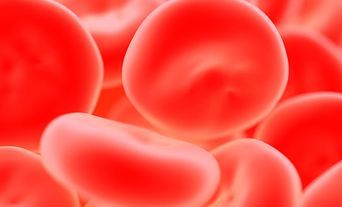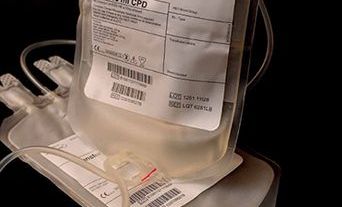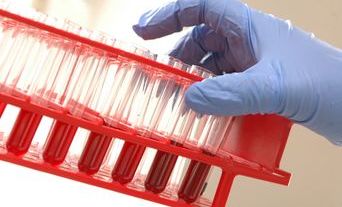Becoming a Chief Scientific Officer is exciting and daunting at the same time. I joined NHS Blood and Transplant (NHSBT) in July 2022 and am so proud to have joined such an amazing organisation, with science at the heart of processes that make critical changes to patients’ lives. In NHSBT, our scientists and specialists are essential to the public. They ensure that we can provide the best care for our citizens, donors and patients and their families. The high-quality services we offer are based on innovative science, often world-leading and life-saving, and reach people within the UK and beyond.
Prior to starting in NHSBT, I worked as a scientist in the public and academic sectors for two decades. I was a clinical scientist at the UK Health Security Agency, specialising in weird and wonderful bacterial pathogens while honing my skills as a clinical laboratory and service leader, juggling the management of a reference laboratory with being Head of Profession for Science and Engineering.
Key achievements
Becoming part of NHSBT
At the time of writing, I have been part of NHSBT for three months and cannot as yet claim any great personal achievements in that time. One of the greatest achievements I have had in my career is being able to work with engaging, caring and intelligent scientists, clinicians and colleagues from around the country, our community and the world. There are many inspiring people at NHSBT. I have been privileged to meet many incredible people here who work to determine blood typing, provide safe and optimal organ donations, develop new therapies and keep people alive with life-saving transfusions. NHSBT has a complex scientific and clinical workforce, with specialists in organ donation, tissues, blood, molecular biology, biobanking, biomedical engineering, transfusion and more. I am keen to enhance our science and services to help improve the system wherever I can.
Fostering scientific advances
We can learn a lot about our achievements in science by looking back at what has been done and evaluating what we still need to do or do even better. It’s been more than 400 years since the English physician Dr William Harvey established that blood circulates around the body, pumped by the heart, and nearly a century since the UK set up its first blood bank (1937) and the Ministry of Health set up the National Blood Transfusion Service with regional blood centres (1946). NHSBT was formed in 2005 from the merger of the National Blood Service and UK Transplant. For those interested in history, we have a website with historical information including a fabulous blood donor video from 1949 demonstrating an early blood laboratory.1
NHSBT has spearheaded several scientific achievements even in the short period since I joined; in 2022, progress on Er blood grouping was made that may help identify and treat rare cases of blood incompatibility, including between pregnant mothers and fetuses.2 NHSBT colleagues were included in a collaborative national approach to develop guidance on crossmatching before deceased donor kidney transplantation, which should encourage a longer-term reduction in times, improve quality and speed up donation.3 A colleague on the Transfusion Medicine Reviews editorial board highlighted the importance of scientific data on our evaluations of standard practice and its value in practice to patients.4 However, we still have more to do.
Serving the whole community
The impact of health inequalities on people who need blood, organ and tissue donations is a stark reminder that we need to work together harder to provide a service that meets the needs of our entire community. Sickle cell disproportionately affects individuals with certain ethnic heritages and black recipients of organ transplants are more likely to wait longer for life-saving transplants than others. We need to increase the diversity of our donor base and improve the science we use to establish the optimal match to improve our ability to meet the demand for treatment and increase every chance we have at saving or extending a life. As part of our genomics programme, NHSBT uses genomics to deliver more accurate, more personalised and more rapid donor/recipient matching in blood transfusion and solid organ and stem cell transplantation. This will reduce the risk of transplant rejection and adverse effects on patients who need repeated transfusions to stay alive. Genomics also aids us to identify rare donors, supporting improved matching in blood transfusion.
What challenges does NHSBT face?
Using research to improve services
The scientific challenges NHSBT faces are complex. We need to work with academia and industry to improve all areas of the science we undertake. It is crucial that we match the pace of innovation and change needed with improved digital and data sharing systems and with the building of a sustainable, future-proofed workforce. We need subject matter expertise in new and evolving areas of science, such as gene therapy to treat patients with lymphoma, bioinformatics, tissue biobanking and preservation, while enhancing the areas we already rely upon as a community, such as transfusion. Behavioural science and clear messaging are key to being effective. The science of communication is critical to NHSBT; we need to communicate as effectively as possible to help donors, recipients and families understand the processes and the gift they can give to others. Investment in the Blood and Transplant Research Units is needed (see the article in the July 2022 Bulletin) and will aid NHSBT to develop in key areas such as precision cellular therapies, organ donation and transplantation, and the use of data to improve practice, quality and donations.5 NHSBT provides a national function, helping hospitals throughout the country by providing essential blood for every patient and ensuring those on waiting lists across the UK get the organs they need. We need to use and evaluate the scientific data we have to define the future processes that are critical for patients. We will improve donation, manufacturing, storage, quality and testing to provide optimal delivery of services to the patients in need.
Building a representative workforce
Equality, diversity and inclusion are essential in science. We need to work together to ensure the current and future workforce is inclusive and diverse. Most of our junior-level life scientists are female, yet this has not yet translated to an equal representation at higher roles; this is mirrored for colleagues from different ethnic groups. We need diversity, not just in blood, tissues and organs, but in the people we work with and the skills they can bring.
Neurodiversity in our workforce and multidisciplinary working should be embraced, encouraged and celebrated. Social mobility should not be a factor in deciding who can train to be a clinician or scientist. We need to speak to young people, encourage them to undertake clinical science as a career and better communicate about science and the rewarding scientific careers that are available. This is key to attracting future generations of dedicated scientists and clinicians from the diverse community we serve and will allow us to be the best we can be and maximise innovation for patients.
I want young people who like science to aspire to be scientists and have rewarding careers. I recently helped a young person with work experience as they shadowed me and an international colleague in writing and reviewing a scientific paper. Before the meeting I was asked ‘what is a scientific paper?’ Afterwards, they understood how aspects of the national curriculum were linked to practical science and affect patient care and laboratory work being undertaken in labs across the country. An aspiring chemist, they are now applying to universities and will be the first in their family aiming to be a scientist and earn a PhD.
Outreach between scientists, the public and policymakers
We need diversity in clinical science leadership roles. Leadership in science is so important. Scientists still get a bad press and are still excluded from the table in some spheres. I have been introduced by consultant clinicians as ‘my lab person’ or a ‘lab rat’ and I still know a scientist who proudly calls themselves a ‘bug scraper’. There is still a perception that scientists cannot communicate, are a weird bunch, cannot be trusted and get embroiled only in the detail. This is not my experience. Everyone I have met in NHSBT is dedicated to helping patients. The healthcare scientists I meet want to do the best they can to help patients and their families; they want to improve science and their understanding of the science to help others. They want more time to think about science and innovation. To innovate, we need to try new things to find better ways of working. We may fail sometimes but we learn from failure and can share that learning.
Healthcare science results form the basis of a huge percentage of clinical practice in our healthcare system. When scientists speak to members of the public, public trust in scientific work increases. Government officials want more contact with individuals who know the appropriate information and the detail required to develop solid policies for future generations. We need more scientists within government who understand healthcare science. We still do not have equity of terms and conditions and opportunities; differential market drivers exist for colleagues with scientific skills that are highly sought.
How can we ensure the future of medical science?
We, as a nation, need future generations of scientists to work in healthcare, academia and industry. Diverse leadership is needed to maximise the talent base for the future. Science is key to everything we do in NHSBT and ensures that we make the best decisions with up-to-date and high-quality evidence; a sound evidence base is needed in several key areas of NHSBT work, such as laboratory science for typing, development of gene therapies and manufacturing supply, storage, and quality and safety.
To achieve this, NHSBT needs a breadth of scientific subject matter experts and generalists to deliver services and lead transformational change. We need to build the next generation of experts, plan our scientific workforce in the longer term and train with contingency planning in mind. We need leaders who understand these challenges, can lever for change and will help us train the clinicians and scientists that can help save future lives.
As Chief Scientific Officer, I aim to help articulate the voice of NHSBT science to push for what we need, enable partnerships and bring people together, highlight the inspirational work and lever for inclusion and investment in NHSBT science. As a girl who left Bradford with poor A-level results, begged my way into university and was taken in by another family after university as my home life disintegrated, I sometimes pinch myself when I log on to my NHSBT computer and start my day. In December 2022, I applied to be a Fellow of RCPath by published works – I hope I am admitted!




